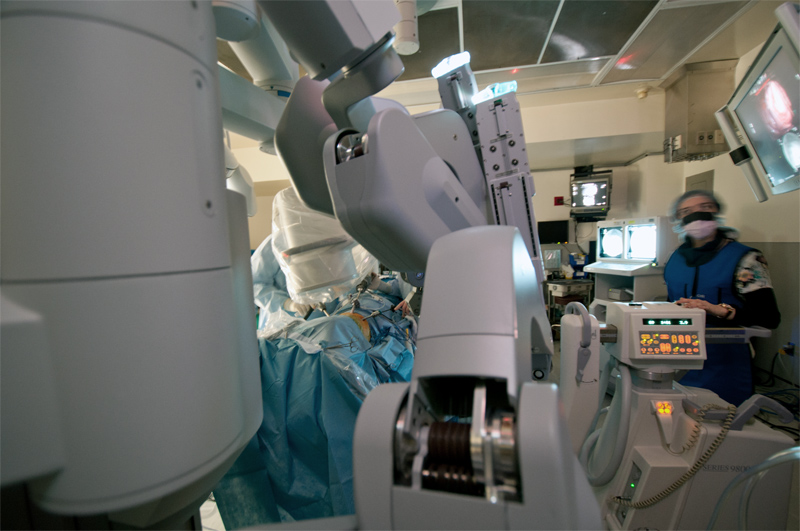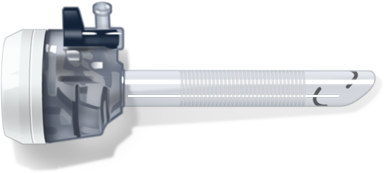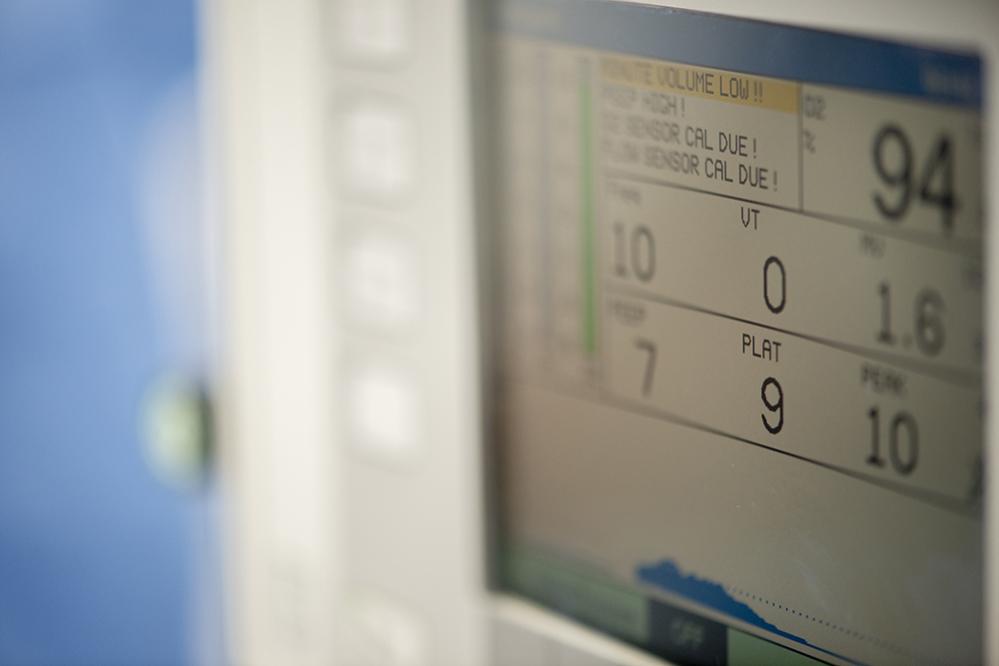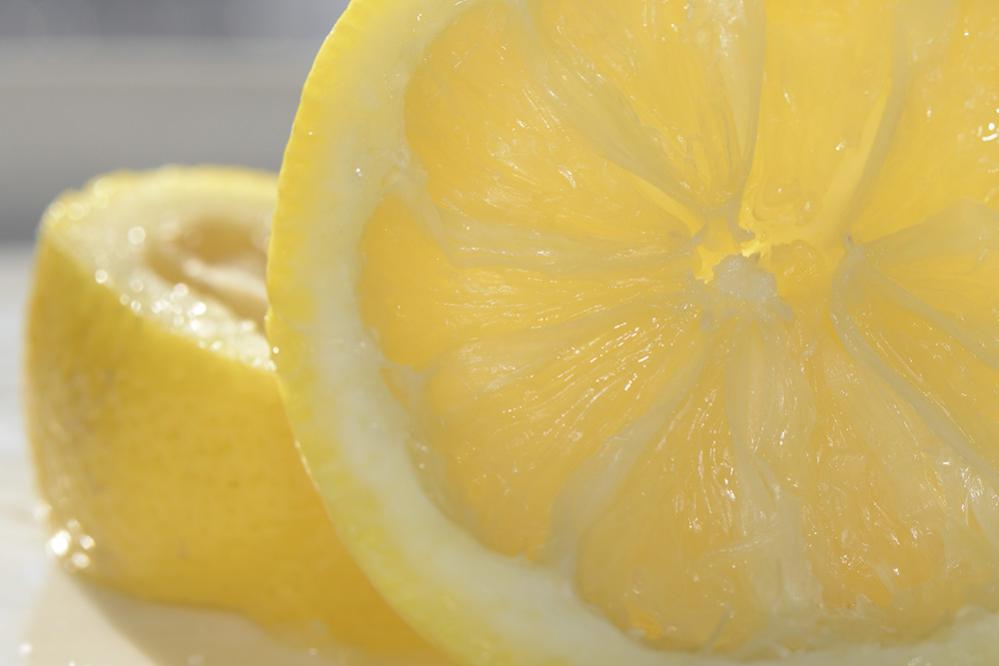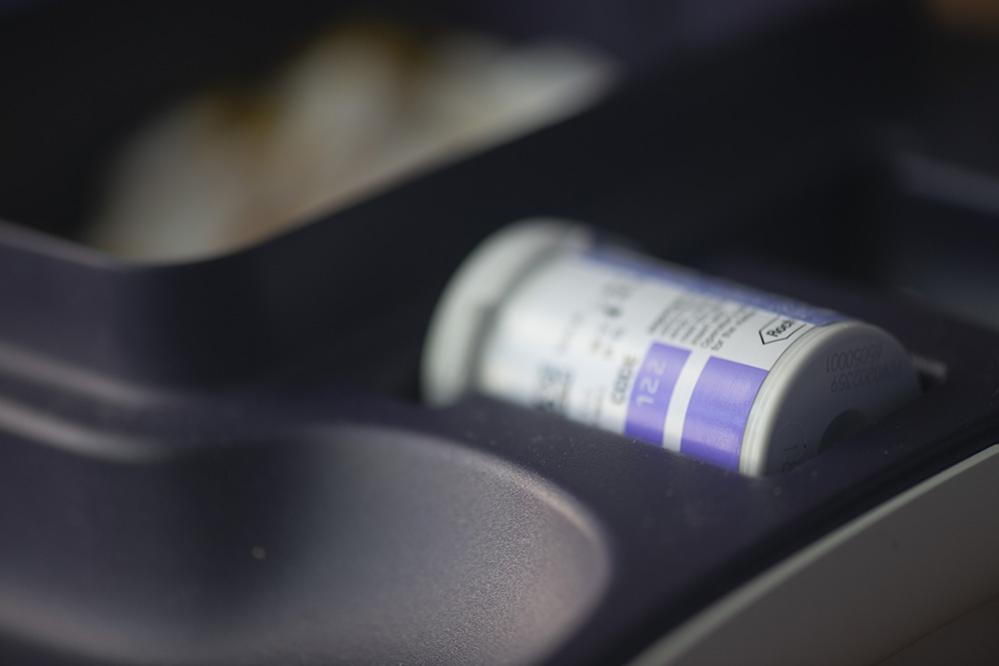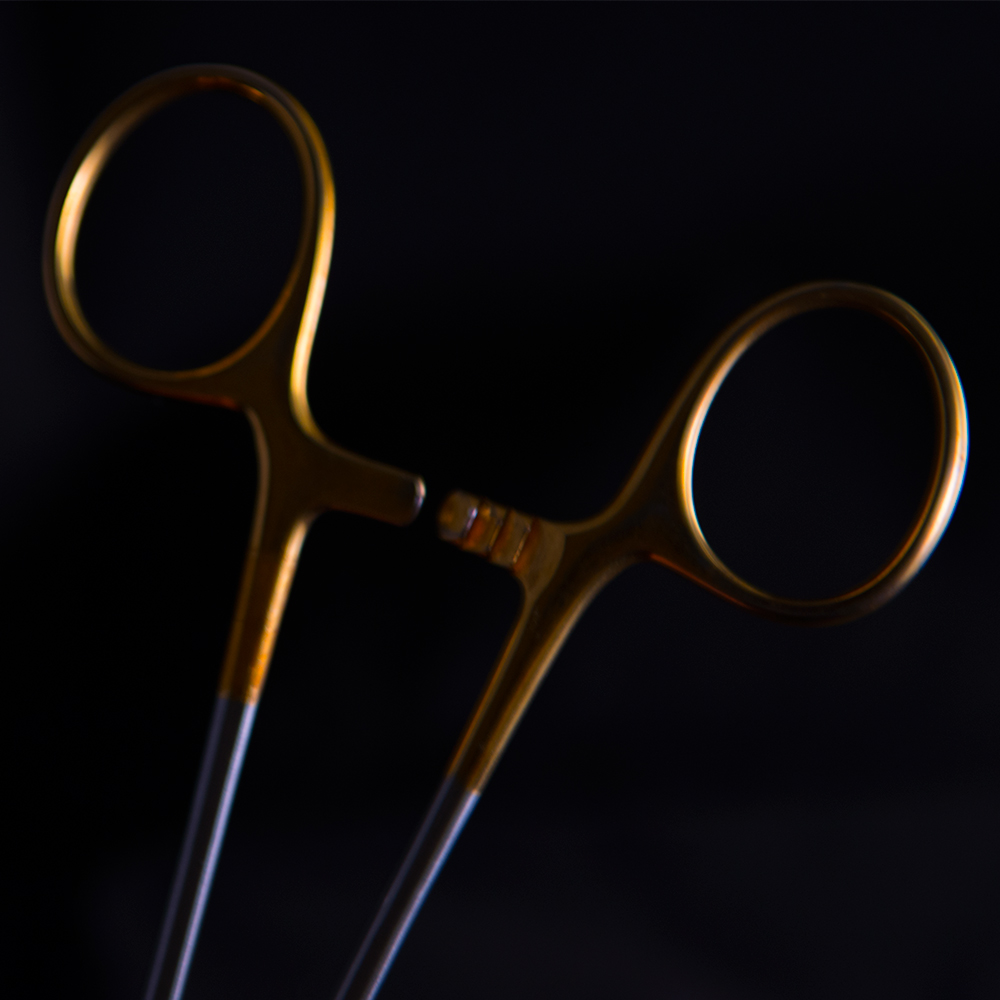What Tools are used in Laparoscopic Surgery?
Laparoscopic surgery uses long-pencil like instruments that fit through small cuts in the abdominal wall instead of large incisions required during open operations.
Laparoscopic Instruments for a variety of purposes
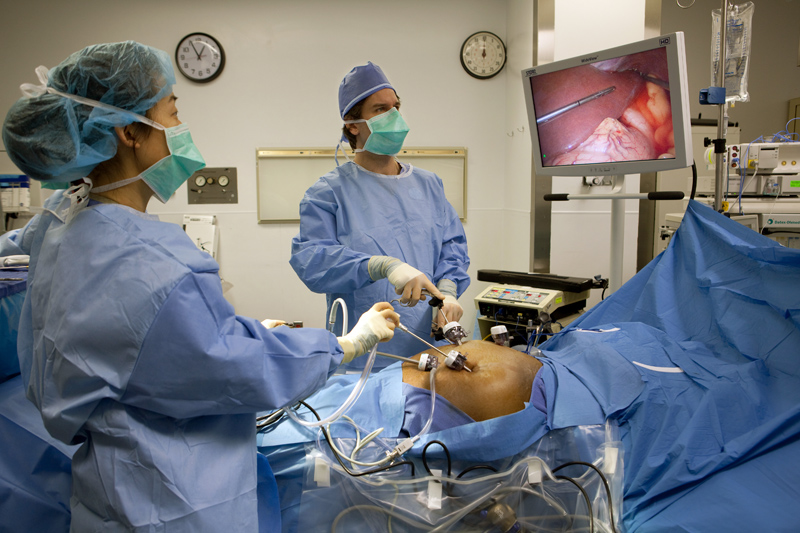
Laparoscopic instruments are used along with a laparoscope, which is a thin telescope fitted with a cold light source and a video camera. Inert gases like carbon dioxide are used to inflate the abdominal region which increases the distance between the organs and the abdominal wall thus enlarging the operating field. Common instruments used during laparoscopic procedures include a: laparoscope, needle driver for suturing, trocar, bowel grasper and surgical mesh.
Laparoscope
 Surgical scopes are one of the oldest instruments used by medical practitioners since ancient times. Modern surgical laparoscopes used for minimally invasive procedures are a far cry from the simple hollow tubes that gradually developed to include lenses for magnified vision. Today, scopes are more like an apparatus with multiple parts that include a CCD camera, viewing device, lens cleaner, and an energy-supply device.
Surgical scopes are one of the oldest instruments used by medical practitioners since ancient times. Modern surgical laparoscopes used for minimally invasive procedures are a far cry from the simple hollow tubes that gradually developed to include lenses for magnified vision. Today, scopes are more like an apparatus with multiple parts that include a CCD camera, viewing device, lens cleaner, and an energy-supply device.
Needle Driver
A needle holder is used by laparoscopic surgeons to hold suturing needles when closing wounds. Forming slip-knots to close wounds and surgical incisions requires precise skills. Suturing can often be tricky to use owing to the property of “memory” which causes tissue to resist deformation. Needle holders have three parts – the jaws, joints, and handles. The instrument is classified as straight or curved depending upon the shape of the jaws.
Trocar
Along with the probe, scalpel, and cannula the trocar is one of the oldest implements used by medical practitioners. A trocar is shaped like a pen and has a sharp triangular point. Trocars are typically placed inside hollow cannulas and introduced inside body cavities to assist in draining fluids. Trocars are now referred to as both the initial entry device as well as the hollow cannula used during the operation. These instruments play an important role in laparoscopic surgery. Instruments such as scissors and graspers are introduced using surgical trocars.
Bowel Grasper
A bowel grasper is used during minimally invasive bowel surgery. The graspers are maneuvered through incisions that are usually no larger than 5 mm. The advantage with using laparoscopic graspers is that they enable the surgeon to grasp and manipulate abdomen tissue with precision without having to cut open the abdomen. The graspers facilitate observation, excision, and biopsy procedures.
Surgical Mesh
Hernia mesh is an implantable device that serves as scaffolding for your natural tissue to grow into and hence reinforce the area. The mesh itself only provides minimal support. It is your own tissue that is ultimately responsible for the repair. There are many different types of surgical mesh that can be used to repair hernias and other defects of the musculoskeletal system.
Robotics, Endoscopy, Fluoroscopy and More
